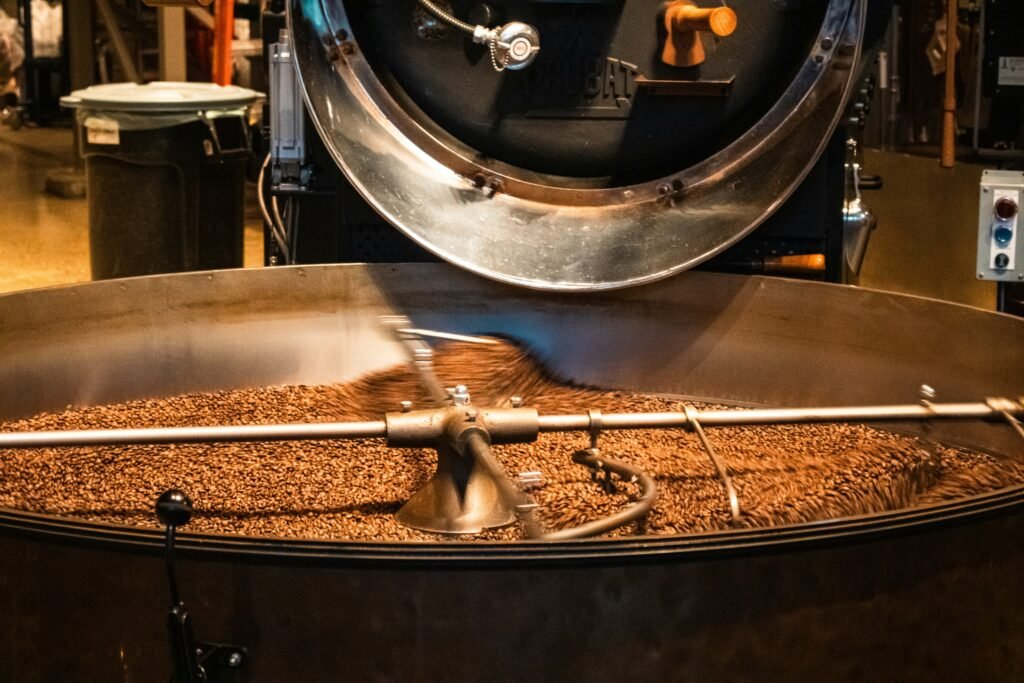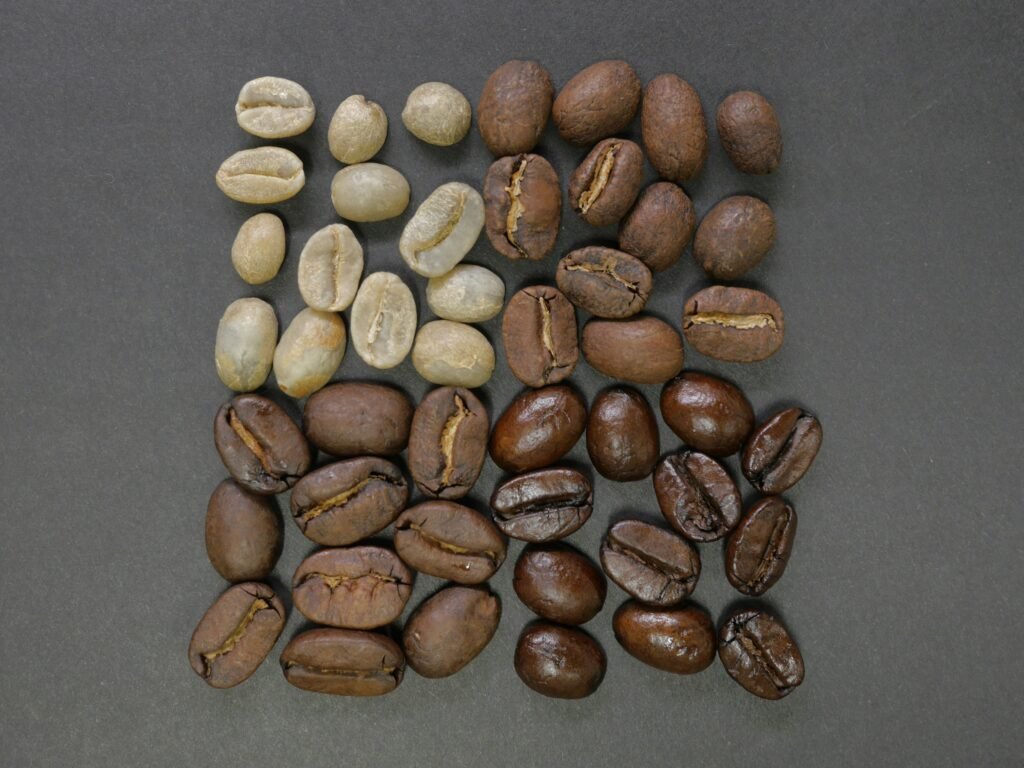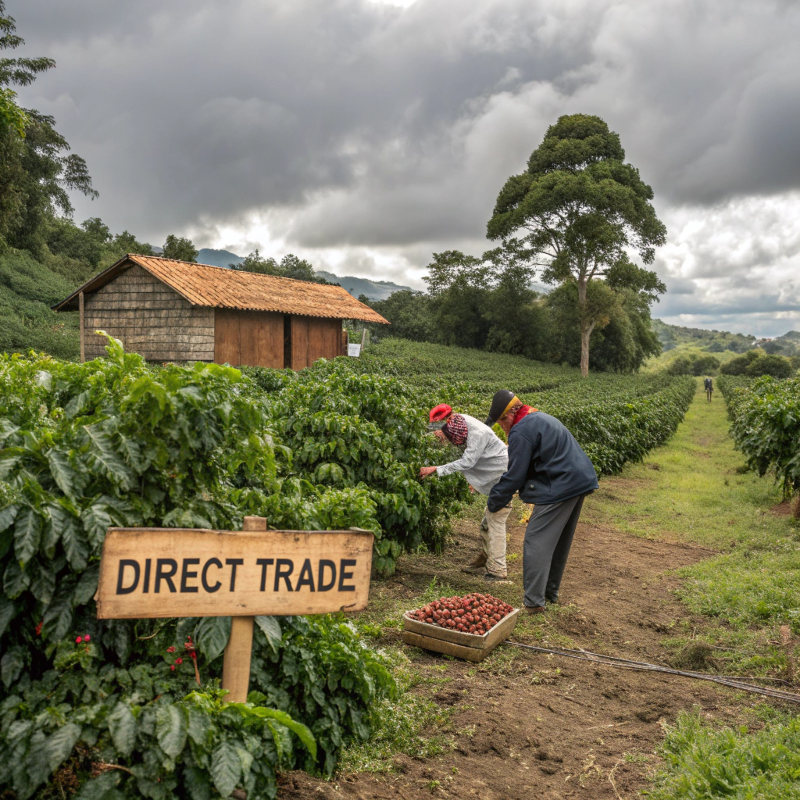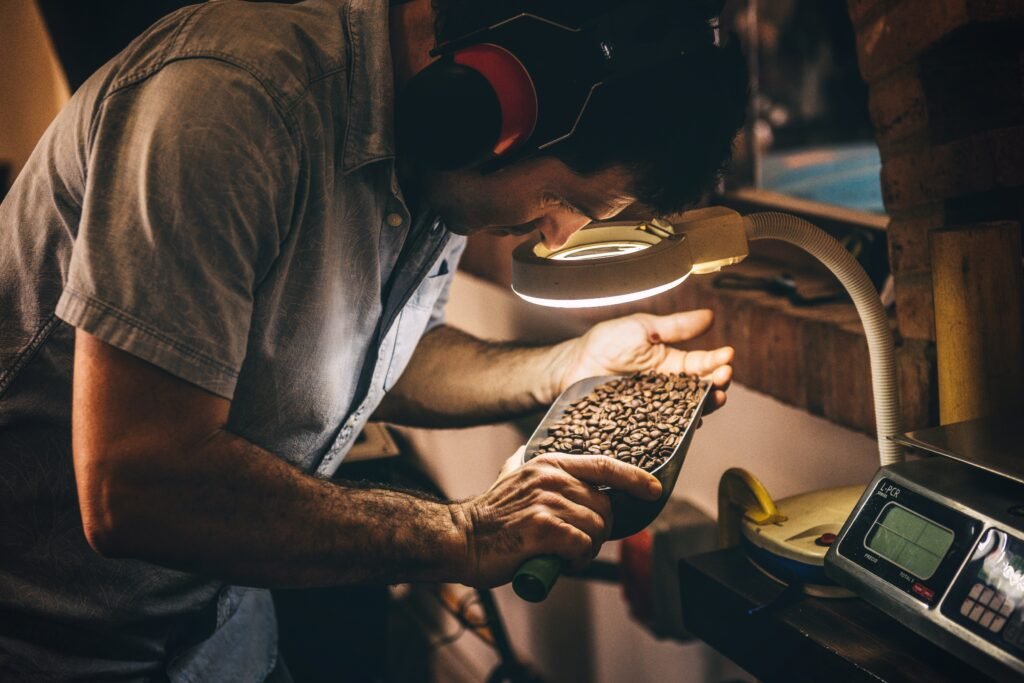Finding exceptional coffee can be confusing with so many roasters claiming superiority. The differences between them aren't always clear, leaving coffee lovers unsure which brands truly deliver quality worth the premium price.
Top coffee roasters differentiate themselves through brewing method preferences (pour-over for bright flavors, French press for body, espresso for intensity) and bean sourcing approaches (direct trade relationships, sustainability commitments, specialty auctions, and seasonal small-batch roasting).

When I first entered the specialty coffee industry, I was overwhelmed by the range of approaches different roasters took to create their signature profiles. After years of working with top roasters, I've identified key differences that truly set the elite apart from the mainstream. Understanding these distinctions will help you make better choices for your brewing setup and flavor preferences.
What Brewing Methods Do Top Coffee Roasters Prefer?
Ever brewed coffee that tasted amazing at the café but fell flat at home? The disconnect often comes from mismatched brewing methods that don't showcase the beans' intended characteristics.
Premium roasters typically recommend brewing methods that highlight their beans' unique qualities: pour-over for light roasts with bright acidity, French press for full-bodied dark roasts, espresso for concentrated flavor profiles, and AeroPress for versatility across different coffee types.

The Science Behind Brewing Method Preferences
During my visits to leading roasting facilities across America, I've noticed clear patterns in how different companies match their beans to specific brewing methods. This isn't arbitrary—it's calculated to maximize the flavor potential of their carefully sourced coffees.
Pour-Over Methods (Chemex, V60, Kalita)
Light-roast specialists like Heart Coffee and Passenger Coffee heavily promote pour-over brewing because it:
- Enhances clarity and brightness through paper filtration
- Provides controlled extraction that preserves delicate floral notes
- Creates a clean mouthfeel that showcases origin characteristics
These methods work exceptionally well with their Ethiopian, Kenyan, and Central American offerings where bright acidity and complex aromatics define the experience.
Immersion Methods (French Press, Clever Dripper)
Traditional roasters focusing on medium-dark profiles like Peet's and Stumptown often recommend immersion brewing because it:
- Preserves natural oils that create satisfying mouthfeel
- Extends extraction time for deeper sweetness development
- Maintains heat throughout brewing for complete flavor extraction
I've found these methods perfectly complement their Indonesian, Brazilian, and Colombian offerings where chocolate notes and nutty characteristics need the fuller body that immersion provides.
Pressure Methods (Espresso, AeroPress, Moka Pot)
Italian-inspired roasters like Blue Bottle and Intelligentsia build many blends specifically for pressure brewing because it:
- Concentrates flavors into intense, balanced expressions
- Creates textural elements like crema that add dimension
- Allows complex flavor compounds to harmonize in compressed extraction
Through pressure extraction, these roasters achieve signature flavor profiles that have made them industry standards for milk-based drinks and straight espresso alike.
How Do Premium Roasters Source Their Coffee Beans?
Many coffee enthusiasts feel overwhelmed by confusing labels and price differences between brands. What justifies one roaster charging triple the price of another for beans from the same country?
Elite coffee roasters source beans through direct trade relationships (paying premium prices to farmers), participation in specialty auctions for rare lots, seasonal purchasing aligned with harvest cycles, and transparent supply chains that enable complete traceability from specific farms to your cup.

The Evolution of Coffee Sourcing Models
The distance between commodity coffee and specialty coffee has grown dramatically over my years in the industry. What began as small differences in quality standards has evolved into fundamentally different business models that transform how coffee moves from farm to cup.
Traditional Commodity Sourcing vs. Direct Trade
The contrast between these approaches explains much about price and quality differences:
| Aspect | Commodity Model | Direct Trade Model |
|---|---|---|
| Price determination | Market-based, volatile | Negotiated, stable premiums |
| Quality focus | Volume consistency | Flavor complexity |
| Farm relationship | Anonymous purchasing | Long-term partnerships |
| Transparency | Limited traceability | Farm-to-cup visibility |
| Environmental impact | Minimal requirements | Customized sustainability projects |
I've seen this difference firsthand at farms in Guatemala where Counter Culture Coffee pays 50-300% above commodity pricing for exceptional lots. This premium directly funds quality improvements through better processing equipment and worker training programs.
Seasonal and Regional Specialization
Top roasters like Onyx and Bird Rock have abandoned the "always available" model in favor of:
- Rotating seasonal offerings that highlight peak freshness
- Limited micro-lot releases from individual farmers
- Experimental processing methods (honey, natural, anaerobic)
- Variety-specific separations that showcase genetic diversity
This approach creates continuously evolving menus that reflect coffee's agricultural reality rather than manufacturing consistency. The result is more vibrant, distinctive flavor profiles that justify premium pricing through genuine quality differences rather than marketing alone.
Why Are Direct Trade Relationships Revolutionizing Coffee Sourcing?
The coffee industry is filled with confusing ethical claims and certification logos. How can consumers know which roasters genuinely prioritize farmer welfare versus those simply using buzzwords for marketing advantage?
Direct trade relationships transform coffee sourcing by enabling roasters to pay substantially higher prices to farmers (often 50-300% above market rates), collaborate on quality improvement projects, implement customized sustainability initiatives, and secure exclusive access to exceptional micro-lots unavailable through conventional supply chains.

The Tangible Benefits of Producer Partnerships
Having witnessed the evolution of direct trade over a decade, I've seen how these relationships create value far beyond simple price premiums. The collaborative nature of these partnerships has fundamentally changed what's possible in specialty coffee.
Quality Development Through Collaboration
Leading roasters like Verve and George Howell don't just buy coffee—they help create it through:
- Experimental processing development (extended fermentation, yeast inoculation)
- Varietal selection guidance based on market preferences
- Harvest timing protocols that maximize ripeness
- Post-harvest handling techniques that preserve quality
During my visits to farms in Colombia, I've observed roasters working alongside producers to implement specific picking protocols and fermentation techniques that dramatically improve cup quality. These interventions often continue across multiple harvest seasons, with roasters providing cupping feedback and farmers gradually refining their approaches.
Sustainability Beyond Certification
Direct relationships enable targeted sustainability initiatives that address:
| Focus Area | Standard Certification | Direct Trade Approach |
|---|---|---|
| Environmental practices | Generic requirements | Farm-specific conservation |
| Worker welfare | Minimum wage standards | Profit-sharing programs |
| Climate resilience | Limited support | Shade tree diversity projects |
| Economic security | Price floors only | Multi-year purchasing contracts |
| Quality incentives | Basic premiums | Sliding scale based on cup scores |
Through these partnerships, roasters like Tim Wendelboe and Ruby Coffee have helped producers transition to organic practices, install water conservation systems, and develop worker housing—all customized to address the specific needs of individual farming communities rather than applying one-size-fits-all certification standards.
Conclusion
Top roasters differentiate themselves through carefully matched brewing recommendations and ethical sourcing practices that directly impact flavor quality. Understanding these differences helps coffee lovers make better purchasing decisions and appreciate the craftsmanship behind exceptional coffee.




